After 2020’s Marvel movie drought, the studio is prepping to launch its highly-anticipated Phase Four plan, and WandaVision seems to be the show that will slingshot fans into the Multiverse and time-travel side-plots and galaxy-hopping adventures that await. In other words, Disney+’s first comic book spin-off has a lot of heavy-lifting to do, especially considering we’re still dealing with the fallout of Avenger’s Endgame and the revelations of Spider-Man: Far From Home. But we’re getting ahead of ourselves.
A decade of storytelling and dozens of movies pre-date WandaVision, and because our collective pandemic brain fog means most of us can’t remember what happened last week let alone two years ago, we thought a quick recap of the MCU might be in order before Scarlet Witch throws everything into chaos.
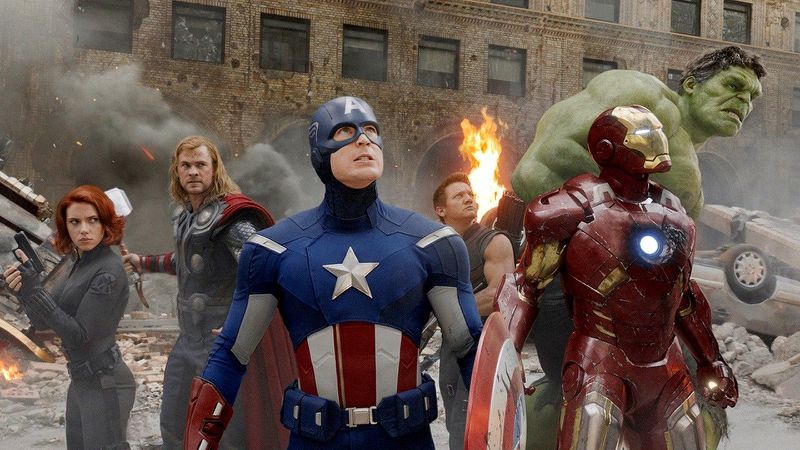
Phase One
Marvel’s first phase launched with Iron Man and ended with The Avengers team-up. Most of the storylines introduced within this first crop of films have been neatly wrapped. Tony Stark (Robert Downey Jr.) went on to co-captain the Avengers with Steve Rogers (Chris Evans). Thor (Chris Hemsworth) would become worthy of wielding Mjolnir and return to fulfill his duties on Asgard. Captain America earned his fame in the past before being unfrozen in the present and having to come to terms with losing his first love, Peggy Carter (Hayley Atwell), and best friend, James “Bucky” Barnes (Sebastian Stan). And Scarlett Johansson’s Black Widow foiled Iron Man before recruiting the Hulk (Mark Ruffalo) in a battle against an alien invasion led by Thor’s mischievous younger brother Loki (Tom Hiddleston) in The Avengers. That final film set up Marvel’s second phase, but key events also had a role to play in Avengers Endgame, setting up a future Loki series on Disney+ and throwing the timeline into a tailspin.
Biggest Takeaways
– The introduction of Iron Man, Captain America, Thor, Black Widow, Hawkeye, and The Hulk.
– Loki’s invasion of New York and the power of the Tesseract.
– The earliest introduction of Thanos (Josh Brolin).
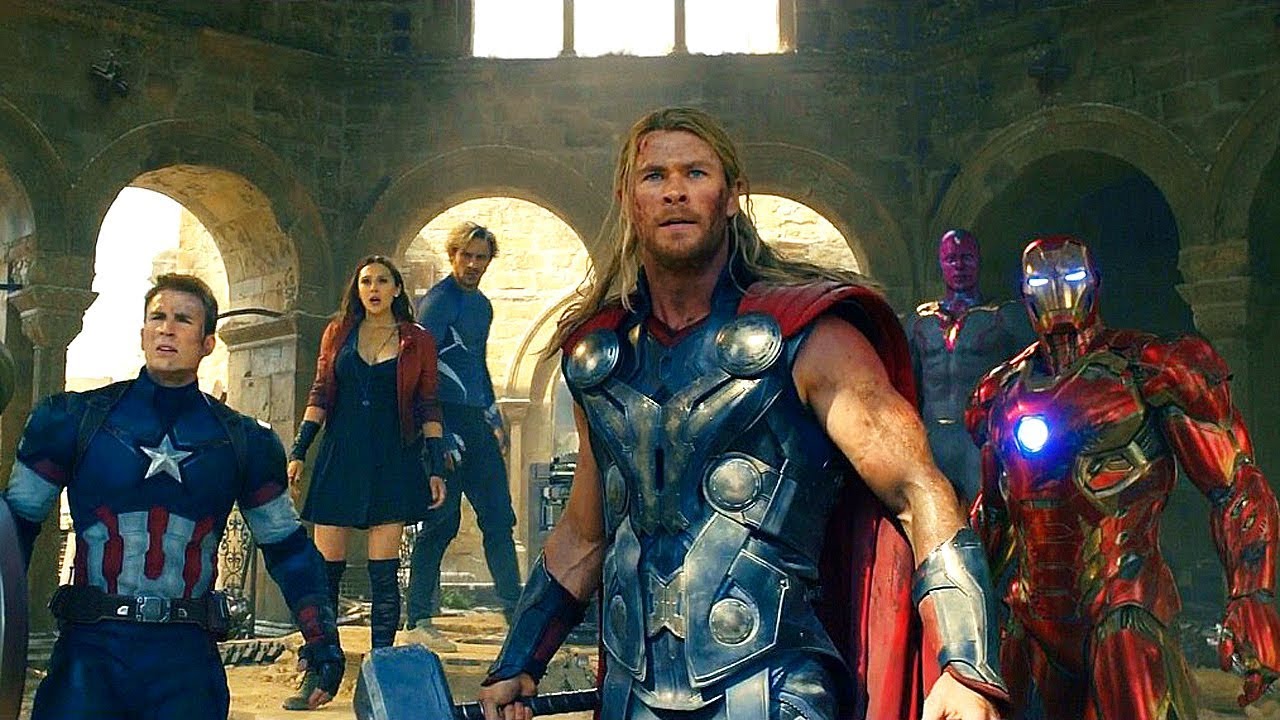
Phase Two
The MCU’s Phase Two kicked off with Iron Man 3, which saw Tony Stark reeling from the battle of New York. His PTSD and fear that partnering with Asgardian Gods had opened up Earth to bigger threats than he was capable of dealing with are what eventually would lead to the creation of Ultron, the villain in the second Avengers team-up flick. This phase also introduced Captain America’s sidekick, Sam Wilson (Anthony Mackie), and revealed that Hydra (a nefarious organization created by Nazis who caused headaches for Steve Rogers in his origin story) had not only infiltrated S.H.I.E.L.D. but also turned his friend Bucky, who he thought was dead, into a deadly assassin named the Winter Soldier. Phase Two also marked one of the first outings into space for the MCU, introducing fans to Peter Quill (Chris Pratt) and his team of reluctant heroes in Guardians of the Galaxy. It’s here we learned more about the Infinity Stones, the powerful elemental crystals forged during the birth of the universe that control essential aspects of our existence. Ronan (Lee Pace) is the central villain in Guardians of the Galaxy and appears to be working for Thanos, who’s been seeking the stones for a long time.
Speaking of the Avengers, they regroup to take on Tony Stark’s Frankenstein creation in Age of Ultron. Once a computer program meant to monitor and manage threats to our planet, Ultron grows into an uncontrollable force, wielding technology to bring about the end of mankind who he deems the biggest threat to peace. He partners with the Maximoff twins, Wanda (Elizabeth Olsen) and Pietro (Aaron Johnson) who were imbued with powers from Loki’s scepter — which once housed the Mind Stone — as part of an experiment conducted by Hydra. Age of Ultron nearly tears the team apart, with Thor vanishing to pursue apocalyptic visions that hint at Thanos’ larger plan and the Hulk taking off in the Quinjet to planets unknown but it does introduce Scarlet Witch as a new member of the team, now led by Captain America after Iron Man decides to retire and leads to the creation of Vision (Paul Bettany), an all-powerful being powered by the Mind Stone. Phase Two also introduced Paul Rudd’s Ant-Man, who would play a crucial role in solving the problem of “the snap” in Endgame, and saw a reunion of sorts between Thor and his brother Loki, who had to work together to save Jane Foster (Natalie Portman) after an army of Dark Elves seeking a powerful object target her.
Biggest Takeaways
– Hydra has taken over S.H.I.E.L.D. and revived Bucky Barnes as the Winter Soldier.
– Ronan, working under Thanos, seeks the Infinity Stones and is defeated by the Guardians of the Galaxy.
– Wanda Maximoff is introduced and her powers open up new possibilities in the MCU.
– Vision is created using the Mind Stone.
– Ant-Man is introduced, as is Sam Wilson.
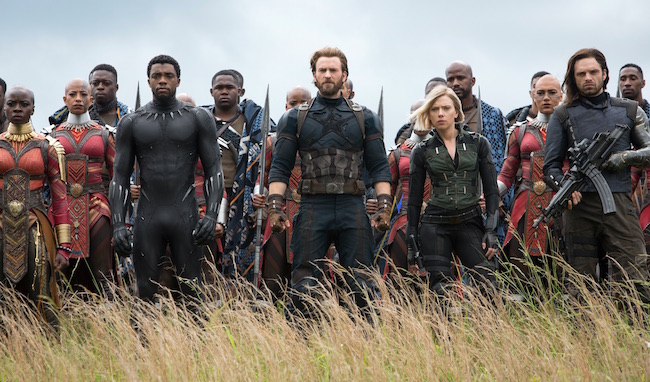
Phase Three
Still with us? Good, because Phase Three is where the MCU really complicates its timeline. Captain America: Civil War serves as the spark, setting Tony Stark and Steve Rogers against each other after Bucky Barnes lands on everyone’s most-wanted list, and Wanda Maximoff accidentally blows up a building with Wakandan emissaries inside. The governments of the world want to be able to control Earth’s mightiest heroes, something that doesn’t sit well with Captain America, but the split between the two friends is made worse when Wakanda’s king is killed by a bomb set off during peace negotiations between friendly nations. This marks one of the first introductions to Wakanda, a secret African society with advanced technology, and it’s when we officially meet T’Challa (Chadwick Boseman), the new king and heir to the Black Panther mantle. The reveal that Wakanda’s resources far surpass what many believed to be possible ties into later films.
Captain America is able to clear his friend’s name, but not before Stark learns it was the Winter Soldier who killed his parents, cementing the rift between the pair. Doctor Strange follows, which sets up the idea of multiple timelines and alternate universes as Stephen Strange bears the burden of protecting the Time Stone. In Guardians of the Galaxy 2, Quill learns his father, Ego (Kurt Russell) is actually an Elder God, a reveal that will have consequences in future films. Spider-Man: Homecoming gives Peter Parker (Tom Holland) his first feature film in the MCU after giving his mentor, Tony Stark, an assist in Civil War. Thor: Ragnarok sees the destruction of Asgard following the death of King Odin (Anthony Hopkins) and the return of his murderous offspring Hela (Cate Blanchett). Not only does the arrival of the Goddess of Death trigger Ragnarok (or the end of all times), but it also launches Thor onto a trash heap planet called Sakar and discovers the Hulk has been there since the events of Age of Ultron. He also teams up with Loki and a Valkyrie (Tessa Thompson) to face off against Hela, which ends with the destruction of Asgard and the migration of its people. It’s here we learn that the Infinity Gauntlet introduced in Thor was a fake, and we see Thanos’ ship overtake the Asgardian fleet in a post-credits scene.
In the chain of events, Black Panther entry takes place about a week following the split of the Avengers. We see T’Challa officially inherit the throne and face opposition from a new villain named Kilmonger (Michael B. Jordan). We also see S.H.I.E.L.D. agent Everett Ross (Martin Freeman) partner with Black Panther to learn more about the origins and uses of Vibranium, which ends with T’Challa revealing his country’s richest secret to the world. In Black Panther, we also get our first glimpse of the Soul Stone, or at least its power, as T’Challa communes with his dead father on some kind of astral plane.
Exploring the world of Wakanda was a big step towards setting up the climactic battle of MCU’s Phase Four as Infinity War picks up with Thanos scouring Earth for the final two stones he needs to complete the gauntlet. After Thanos lays waste to the ship carrying the last of Asgard’s people, killing Loki and Heimdall (Idris Elba) in pursuit of the Space Stone, Thor is set adrift in space, and the Hulk, now just Bruce Banner, is sent back to Earth. He warns Doctor Strange of Thanos’ plan, but Strange is taken hostage by the villain’s lieutenants anyway, while Tony Stark and Peter Parker catch a ride on their spaceship in order to rescue him. Thanos’ plan to retrieve the Mind Stone from Vision goes awry, but he is able to score the Reality Stone from The Collector before the Guardians of the Galaxy can get to it. While Thor, Groot, and Rocket travel to a mythical planet to create a new battle-weapon to replace the destroyed Mjolnir, the rest of the team heads to Nowhere. It’s here Gamora reveals she knows where the Soul Stone is hidden which is why Thanos captures her. He’ll eventually sacrifice her to retrieve the Stone before facing off against Doctor Strange, Iron Man, Spider-Man, and the Guardians on a planet called Titan. He’s able to retrieve the Time Stone after Strange reveals he’s only seen one possible outcome where they defeat Thanos, which leaves Vision as the last barrier to ultimate power. So the fight heads to Wakanda, where Thanos kills Vision before snapping his fingers and wiping out half of the galaxy’s population including Black Panther, Scarlet Witch, the Winter Soldier, Peter Parker, and most of the Guardians. Before Nick Fury disintegrates he contacts Captain Marvel, which sets her origin story into motion, but first, another Ant-Man movie dated before Infinity War introduces The Wasp (Evangeline Lily) and the concept of the Quantum Realm.
Captain Marvel, the MCU’s first female-led superhero installment, takes place decades before any Marvel film to date, following the story of Carol Danvers, a U.S. Air Force pilot turned Kree warrior who discovers her extraordinary powers come from the Tesseract. The film also marks the return of Ronan, and a more in-depth look at the war between the Kree civilization and the Skrulls, whom Danvers sides with in the end. She teams up with Nick Fury (Samuel L. Jackson) to defeat the Kree Empire, which serves as the catalyst for Fury’s formation of S.H.I.E.L.D. and his determination to put together a group of superpowered heroes to protect Earth.
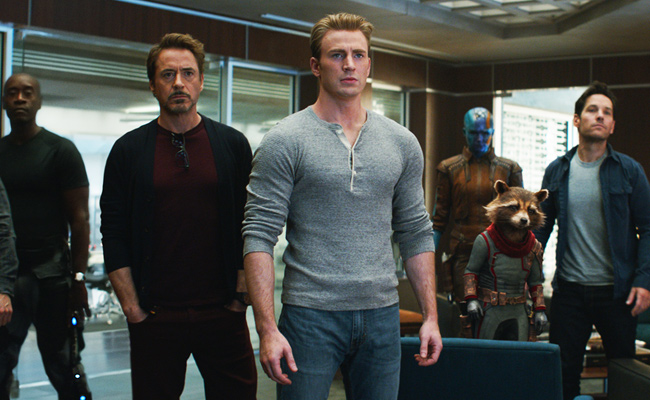
This brings us to Endgame, where the survivors of the snap reverse time with help from Ant-Man and his knowledge of the Quantum Realm. Black Widow sacrifices herself to retrieve the Soul Stone before Tony Stark wields the Infinity Gauntlet to snap Thanos and his army out of existence at the cost of his own life. Endgame brings everyone back, though the five years post-snap are remembered by the survivors, and it also sets Thor on a journey with the Guardians, after passing the mantle of king to Valkyrie. When placing the Infinity Stones back in their correct timelines, a past version of Loki manages to escape with the Tesseract and Steve Rogers decides to live out his life with Peggy Carter, reappearing as an old man and passing the shield to friend Sam Wilson. Vision is still gone, having died before the snap, as is the post Guardians version of Gamora (though Star-Lord has gone off in search of the old Gamora).
And in Spider-Man: Far From Home, Peter Parker, now back from the beyond, is left navigating the years he missed, mourning the loss of his mentor, and fielding new threats in the form of Jake Gyllenhaal’s Mysterio, a villain from the multi-verse. Well, not really. Mysterio claims to be from the multi-verse, but he’s really just a disgruntled Stark groupie out for revenge. Still, Far From Home introduces concepts that WandaVision is sure to pick up and run with.
Biggest Takeaways
– Thanos, Vision, Black Widow, and Iron Man are dead. The snap has been reversed but the five years in between Infinity War and Endgame still exist.
– Loki is somewhere in the timeline, armed with the Tesseract.
– Thor has partnered with the Guardians for more space adventures, leaving Valkyrie to look over the Asgardians on Earth.
– Peter Parker is positioned as the next Iron Man, err Spider, and we learn of the existence of the multi-verse thanks to the villain Mysterio.
– Captain America is now an old man and has passed the shield to Sam Wilson, setting up a future Disney+ spin-off.
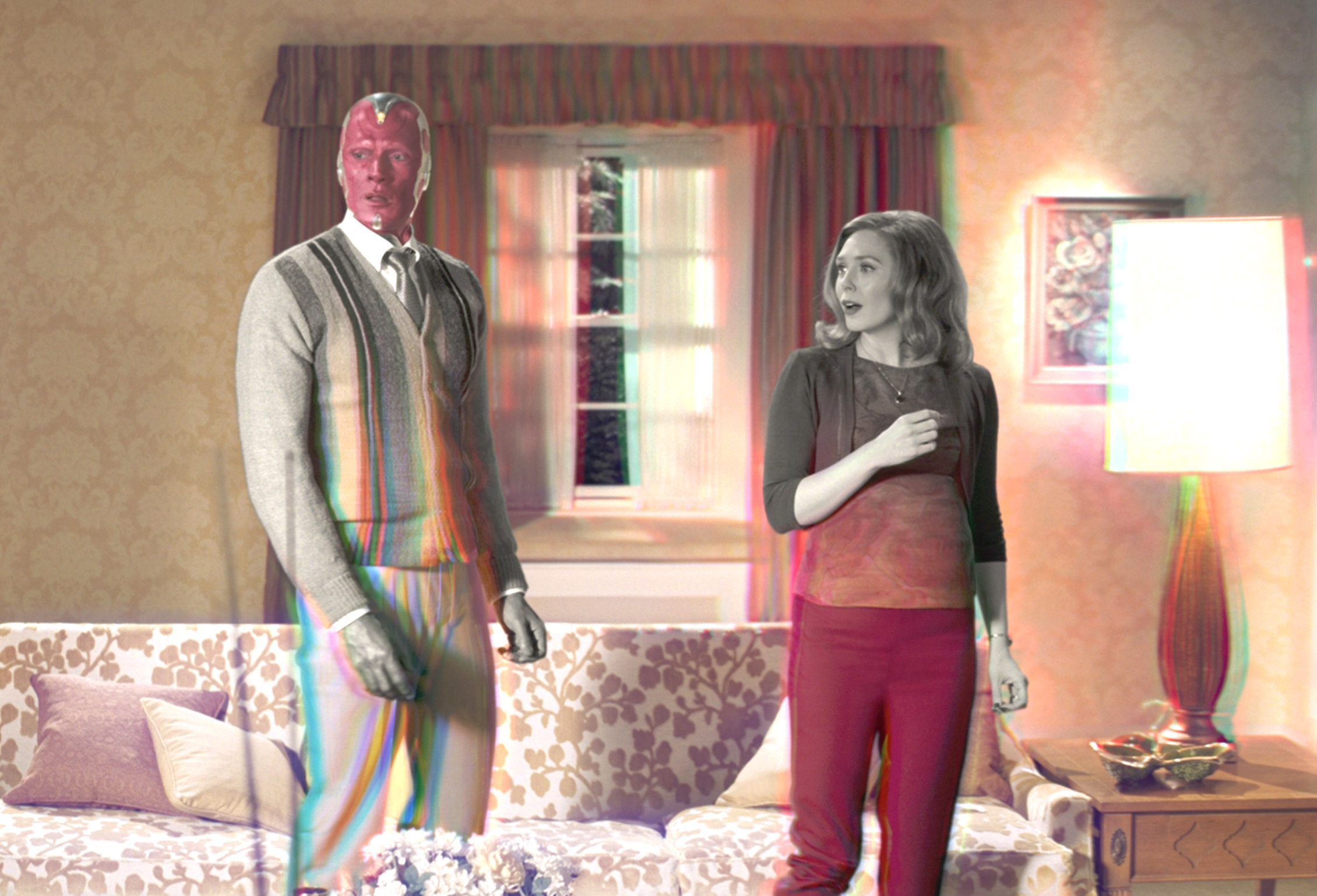
So What Does That Mean For WandaVision?
The plot of WandaVision is being kept tightly under wraps. Even critics who’ve seen the first few episodes aren’t spoiling anything which makes sense seeing as the biggest story developments seem to happen later in the season. But, here’s what we know about how the show fits into all of this MCU history we just Cliff-noted.
WandaVision is set after the events of Endgame and, judging by its many trailers, it looks to be an amalgam of TV eras — from black and white sitcoms like I Love Lucy to ’80s family comedies. It’s said to sport a lineup of familiar faces, including Kat Dennings as Darcy Lewis from the Thor films and Randall Park as FBI agent Jimmy Woo from Ant-Man and the Wasp. This suggests that WandaVision might explore the concept of the multiverse in full, as Wanda interacts with key characters across timelines. In fact, it might be Wanda herself who’s responsible for the multiverse problem, something the confirmation of a new Doctor Strange movie and Elizabeth Olsen’s starring role in it, suggests.
It’s likely Vision is still dead, or somewhere in between life and death, when WandaVision starts and, to cope with the loss, Wanda has created a world or timeline that throws everything into chaos, which could have repercussions down the line.
Disney+’s ‘WandaVision’ will premiere on January 15.







